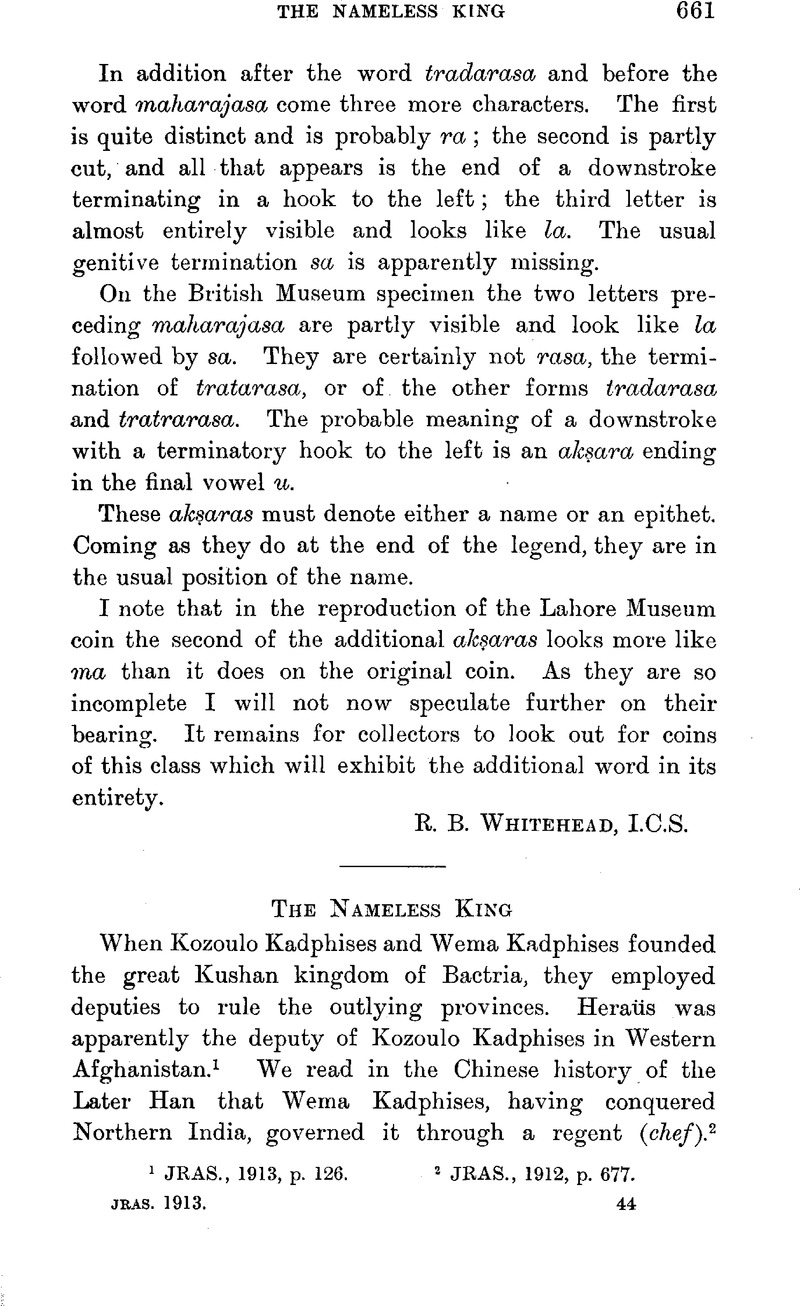No CrossRef data available.
Article contents
Abstract

- Type
- Miscellaneous Communications
- Information
- Copyright
- Copyright © The Royal Asiatic Society 1913
References
page 661 note 1 JRAS., 1913, p. 126.Google Scholar
page 661 note 2 JRAS., 1912, p. 677.Google Scholar
page 662 note 1 Chavannes, , T'oung-pao, sér. II, vol. vii, No. 2, p. 232 (p. 24 of the reprint).Google Scholar
page 662 note 2 JRAS., 1912, p. 677.Google Scholar
page 662 note 3 Rapson, , Indian Coins (Grundriss), § 67, pp. 16–17.Google Scholar
page 662 note 4 Cunningham, , “Coins of the Kushans”: Num. Chron., ser. III, xii, pp. 40–82Google Scholar (p. 33 of the reprint), after describing this coin, goes on to say: “In addition to the two symbols of Wema Kadphises and the Nameless King, I notice the following peculiarities which are common to the coins of these two princes:—
(1) Both use the same titles of ΒΑСΙΛΕΥС ΒΑСΙΛΕωΝ СωΤΗΡΜΕΓΑС in the nominative case.
(2) Both make use of a circular margin composed of reels and pellets, in the place of the native legend.
(3) Wema Kadphises holds a club upright before his face. The Nameless King holds a sceptre upright before his face.
(4) Both use the same peculiar form of the Gandharian letter j,” i.e. the form which has a small stroke to the right at the foot of the slanting vertical stroke.
See also Rapson, , op. cit., § 67.Google Scholar
page 663 note 1 JRAS., 1913, p. 129.Google Scholar
page 663 note 2 See, better, JASB., vol. xxiii (1854), p. 705Google Scholar, plate, fig. 4.
page 664 note 1 See JRAS., 1905, p. 229 ff.Google Scholar




